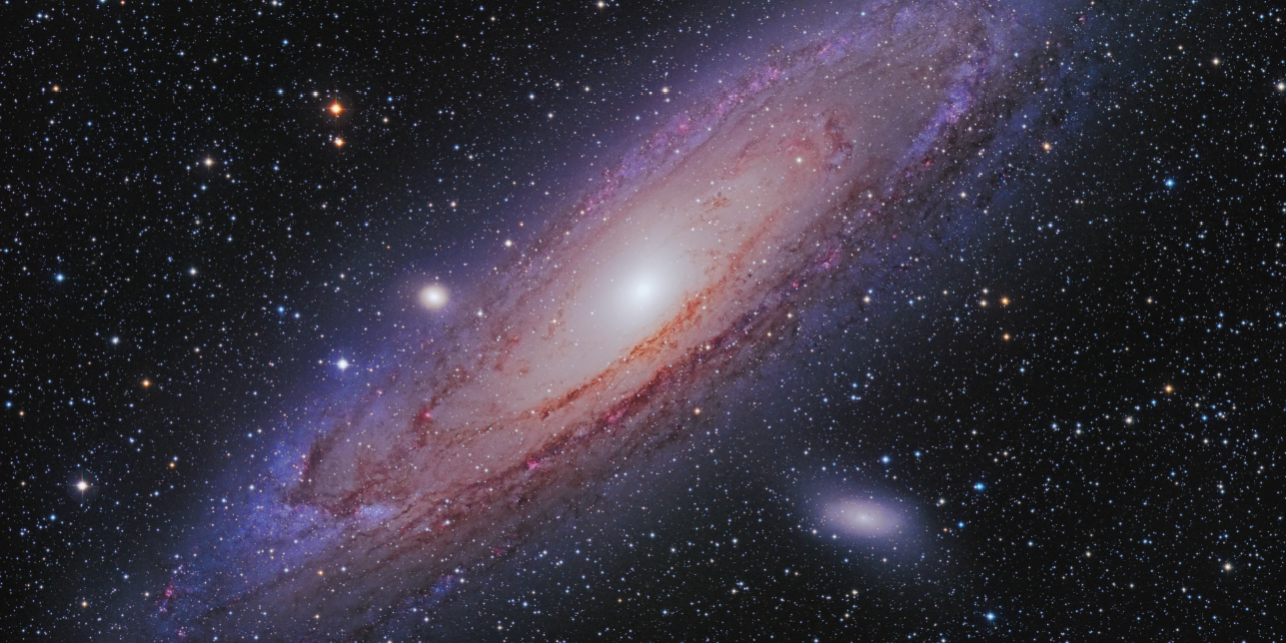The Andromeda Galaxy is an amazing sight to behold. It is the nearest galaxy to our own at nearly 2.5 million light years distant and has around 1 trillion stars. It can be seen as a “small smudge” with the naked eye and through binoculars it has a “squashed” elliptical appearance. With the Andromeda galaxy in the east in our night sky, it signifies the start of the autumnal observing and imaging season.
The apparent size of this galaxy is quite large being some several Moon diameters across (see here for example). For those who want to image this galaxy one needs a short focal length instrument to get as much of this object in the frame as possible. Celestron’s 8″ Rowe-Ackermann Schmidt Astrograph (RASA) is a great choice with its short 400mm focal length and its fast f/2 focal ratio for short exposure times.
 Recently Austrian astrophotographer Christoph Kaltseis used a RASA 8″ to capture the Andromeda galaxy in fantastic detail. His equipment included:
Recently Austrian astrophotographer Christoph Kaltseis used a RASA 8″ to capture the Andromeda galaxy in fantastic detail. His equipment included:
- RASA 8″
- Baader UHC-S
- upcoming Baader F/2 high speed H-alpha and O-III filters
- pre-production Baader FCCT (Filter Changer and Camera Tilter) for the RASA 8 for filter swapping and camera adjustment to image this galaxy
- cooled CMOS camera
 You can read the story behind how he created his amazing image in a poster that was part of the german Astro-Magazine “Sterne-und Weltraum” (Stars and Space) by downloading the poster.
You can read the story behind how he created his amazing image in a poster that was part of the german Astro-Magazine “Sterne-und Weltraum” (Stars and Space) by downloading the poster.
The article can also be seen in your browser here.
Enjoy!








